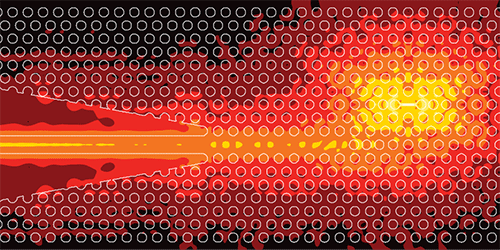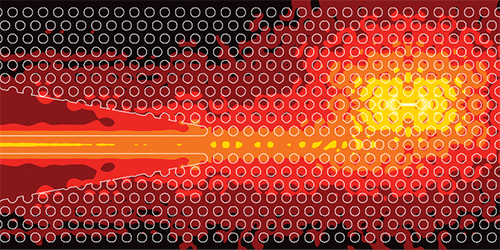Graphene Helps Catch Light Quanta
For many light-based quantum applications, failing to log the arrival of even a few photons can undermine performance. Some single-photon detectors work by registering a temperature rise when they absorb one photon, but this sensitivity diminishes for small photon energies (low frequencies.) Researchers have now shown that incorporating graphene into a particular type of single-photon detector could extend the lower end of the detector’s frequency range by four decades, to include gigahertz light (radio waves).
The device, proposed by Kin Chung Fong from Raytheon BBN Technologies, Massachusetts, and colleagues, sandwiches a sheet of graphene between two layers of superconducting material to create a Josephson junction. At low temperatures, and in the absence of photons, a superconducting current flows through the device. But the heat from a single photon is sufficient to warm the graphene, which alters the Josephson junction such that no superconducting current can flow. Thus photons can be detected by monitoring the device’s current.
All of this works thanks to graphene’s unique band structure, which results in the material having a negligible electronic heat capacity. This property ensures that even a single low-energy photon can heat the material enough to block the superconducting current, and it enables heat to dissipate quickly, allowing the detector to rapidly reset. According to the team’s calculations, the device could detect individual infrared photons at a rate of up to a billion times per second and microwave photons at a rate of one million times per second. The team also suggests coupling photons into their device through waveguides and photonic cavities to make sure that no photon goes uncounted.
This research is published in Physical Review Applied.
–Katherine Wright
Katherine Wright is a Contributing Editor for Physics.





